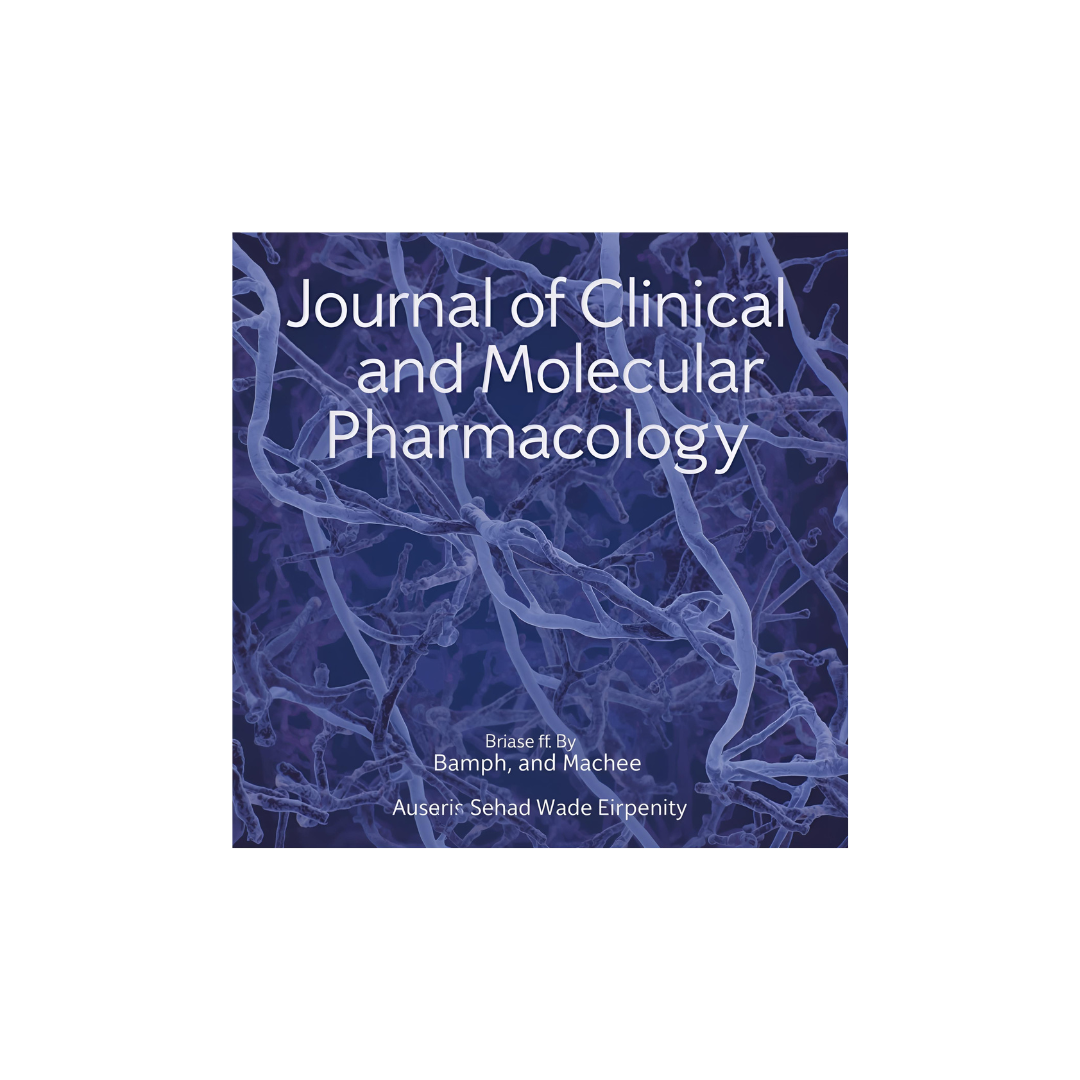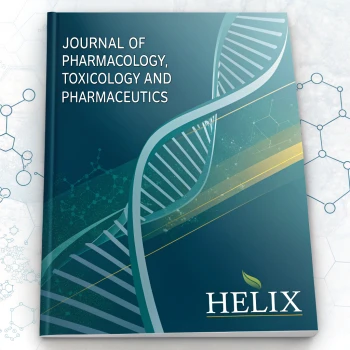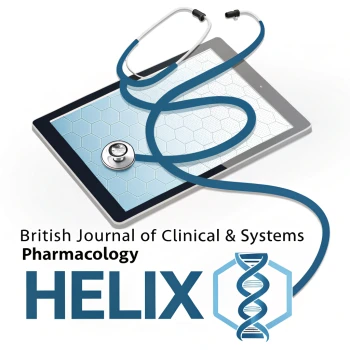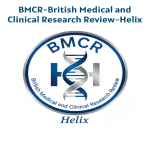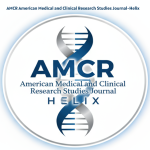Journal of Clinical and Molecular Pharmacology-Helix is a publication of Helix Health Science www.helixhealthscience.com contact@helixhealthscience.com
Exploring the Journal of Clinical and Molecular Pharmacology-Helix: A Comprehensive Overview
Introduction to the Journal of Clinical and Molecular Pharmacology-Helix
The Journal of Clinical and Molecular Pharmacology-Helix is a pivotal publication that stands at the intersection of clinical practice and molecular research. Its mission is to disseminate groundbreaking findings in the fields of clinical and molecular pharmacology, aiming to enhance understanding and the development of pharmacological therapies. This journal serves as a platform for researchers, clinicians, and pharmacologists to share their work, thus fostering a collaborative environment that is essential for progress in this scientific discipline.
With a broad scope, the journal publishes original research articles, reviews, and case studies that address various aspects of pharmacology, ranging from drug development to clinical applications. The interdisciplinary nature of articles ensures that insights drawn from molecular studies can directly inform clinical practices and vice versa. As the fields of clinical and molecular pharmacology continue to evolve, the journal adapts by encouraging submissions that explore innovative methodologies, emerging drug targets, and novel therapeutic strategies.
The significance of the Journal of Clinical and Molecular Pharmacology-Helix extends beyond academic publishing; it plays a crucial role in bridging the gap between laboratory research and bedside application. By providing high-quality, peer-reviewed content, the journal contributes to the advancement of pharmacology as a discipline, ensuring that practitioners have access to the latest scientific knowledge. Furthermore, insights shared in the journal not only support the ongoing education of healthcare professionals but also enhance patient care and outcomes through informed drug usage.
In summary, the Journal of Clinical and Molecular Pharmacology-Helix is a valuable asset to the scientific community, facilitating the global exchange of knowledge while driving the advancement of pharmacological research and its clinical applications.
Key Areas of Focus and Recent Publications
The Journal of Clinical and Molecular Pharmacology-Helix is committed to advancing the field of pharmacology through comprehensive research and insightful publications. The journal primarily emphasizes three key areas of focus: clinical trials, drug development, and molecular pharmacology. Each of these areas plays a crucial role in the understanding and application of pharmacological principles to enhance patient care.
Clinical trials form a significant part of the journal's portfolio, providing a platform for researchers to present findings that may lead to enhanced treatment protocols. These studies undergo rigorous peer review to ensure high standards, addressing various aspects of patient safety, efficacy, and long-term outcomes associated with new therapeutic regimens. A noteworthy recent publication discussed the innovative use of biomarkers in monitoring treatment responses, exemplifying the journal’s dedication to integrating cutting-edge methodologies into clinical practice.
In the realm of drug development, the journal features studies that explore the pharmacological profiles of newly synthesized compounds. These studies contribute to a better understanding of therapeutic mechanisms, optimizing dosing regimens, and minimizing adverse effects. A recent paper highlighted the development of a novel drug candidate targeting specific signaling pathways in cancerous cells, showcasing the potential for personalized medicine in oncological settings.
Molecular pharmacology remains a cornerstone of the journal, as it connects the biochemical basis of drug action with therapeutic outcomes. Recent reviews have synthesized current knowledge on the interactions between drugs and their molecular targets, providing insights into how alterations at the genetic or protein level can impact drug efficacy. By emphasizing these key research areas, the Journal of Clinical and Molecular Pharmacology-Helix significantly contributes to the scientific community's efforts in enhancing patient care through informed pharmacological advancements.
Peer Review Process and Publication Criteria
The Journal of Clinical and Molecular Pharmacology-Helix employs a rigorous peer review process to uphold the high-quality standards expected for published research in the field. This multi-step process is essential for evaluating the validity, significance, and originality of submitted manuscripts. Initially, authors submit their manuscripts through the journal's online submission system, which streamlines the review process and ensures that all submissions are handled efficiently.
Upon submission, the editorial team conducts an initial assessment to determine whether the manuscript aligns with the journal's focus and scope. Manuscripts that meet these basic criteria are then forwarded to selected experts in the field, known as peer reviewers. These reviewers, often possessing significant experience and specialized knowledge, assess the manuscript's methodology, results, and overall contribution to clinical and molecular pharmacology. Their feedback is pivotal, allowing editors to make informed decisions about furthering the manuscript through the publication process.
In terms of publication criteria, the journal prioritizes studies that offer novel insights, robust evidence, and relevance to contemporary challenges in pharmacology. Authors are encouraged to familiarize themselves with the journal's specific guidelines, which provide clear expectations for formatting, referencing, and ethical considerations. Adhering to these guidelines can significantly enhance the chances of acceptance.
Beyond the peer review mechanism, editors play a critical role in shaping the overall discourse within the journal. They ensure that reviewed articles are not only scientifically sound but also well-structured and accessible to the intended audience. Through this collaborative effort among authors, reviewers, and editors, the Journal of Clinical and Molecular Pharmacology-Helix continues to contribute to the progressive discourse in the field of pharmacological research.
Future Directions and the Role of Emerging Technologies
The landscape of clinical and molecular pharmacology is experiencing a transformative shift driven by the rapid development of emerging technologies. As we look toward the future, it becomes increasingly apparent that innovations such as artificial intelligence (AI), personalized medicine, and advanced molecular profiling will significantly impact research practices and publications in this field. These technologies are not only enhancing our understanding of drug interactions and treatment efficacy but are also paving the way for more tailored healthcare solutions.
Artificial intelligence, particularly, holds great promise for pharmacology by aiding in the analysis of vast datasets. Machine learning algorithms can process complex biological information, leading to the identification of new drug targets and the optimization of drug discovery processes. Additionally, AI can streamline clinical trial design, enhancing patient selection and monitoring, which in turn could expedite the translation of research findings into clinical practice. As the Journal of Clinical and Molecular Pharmacology-Helix embraces these developments, expect to see an increasing volume of publications featuring AI-driven research methodologies that elucidate pharmacological mechanisms and therapeutic outcomes.
Furthermore, the integration of personalized medicine signifies a paradigm shift in treatment approaches. By harnessing genomic and proteomic data, researchers can develop tailored therapies that are specifically designed for individual patients. This is anticipated to lead to a reduction in adverse drug reactions and an increase in treatment efficacy. The journal is likely to support studies that explore the implications of personalized approaches in pharmacology, creating a platform for disseminating significant advancements within this domain.
Moreover, advancements in molecular profiling techniques will facilitate a deeper understanding of disease mechanisms and drug responses. By employing sophisticated tools such as next-generation sequencing, researchers can uncover biomarkers that play critical roles in pharmacological responses. This could lead to the emergence of new therapeutic strategies focused on precise molecular targets. Consequently, the Journal of Clinical and Molecular Pharmacology-Helix is poised to contribute significantly to the future of pharmacological research by highlighting groundbreaking studies in these areas.

